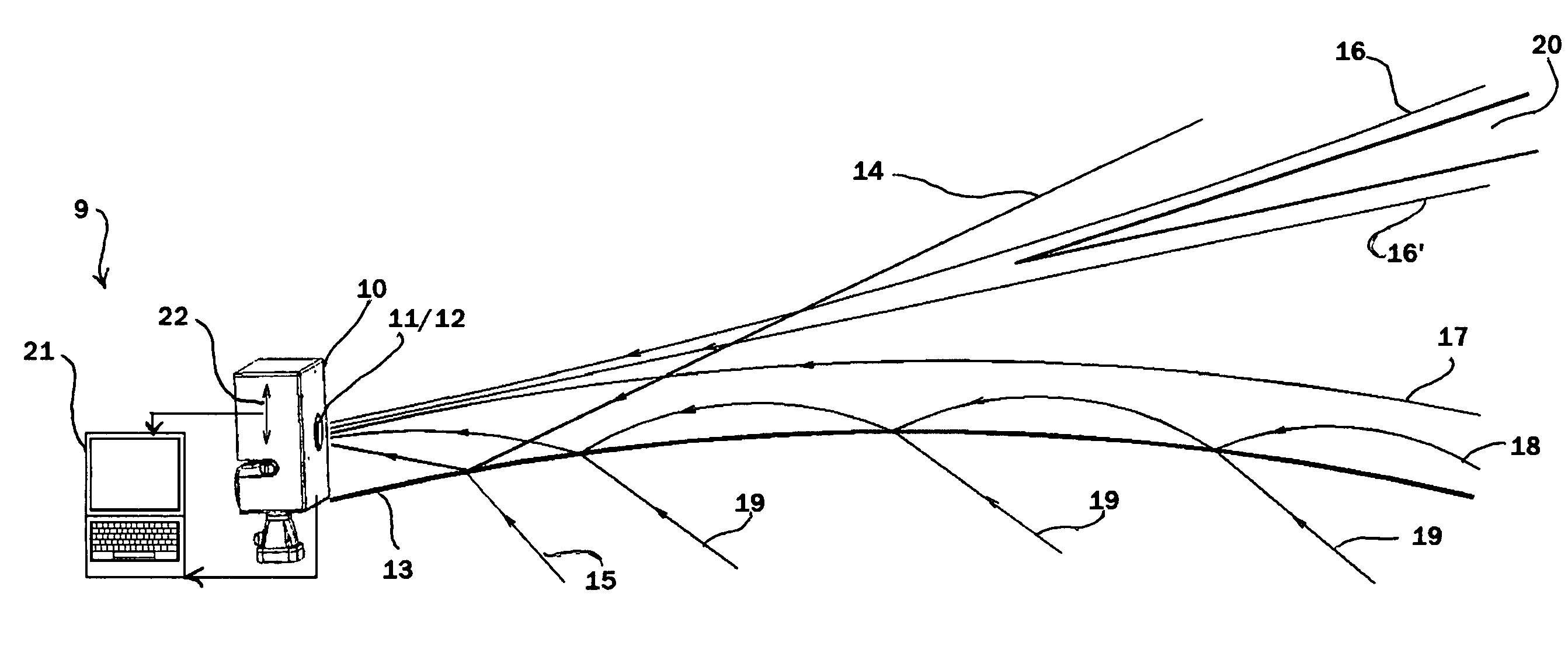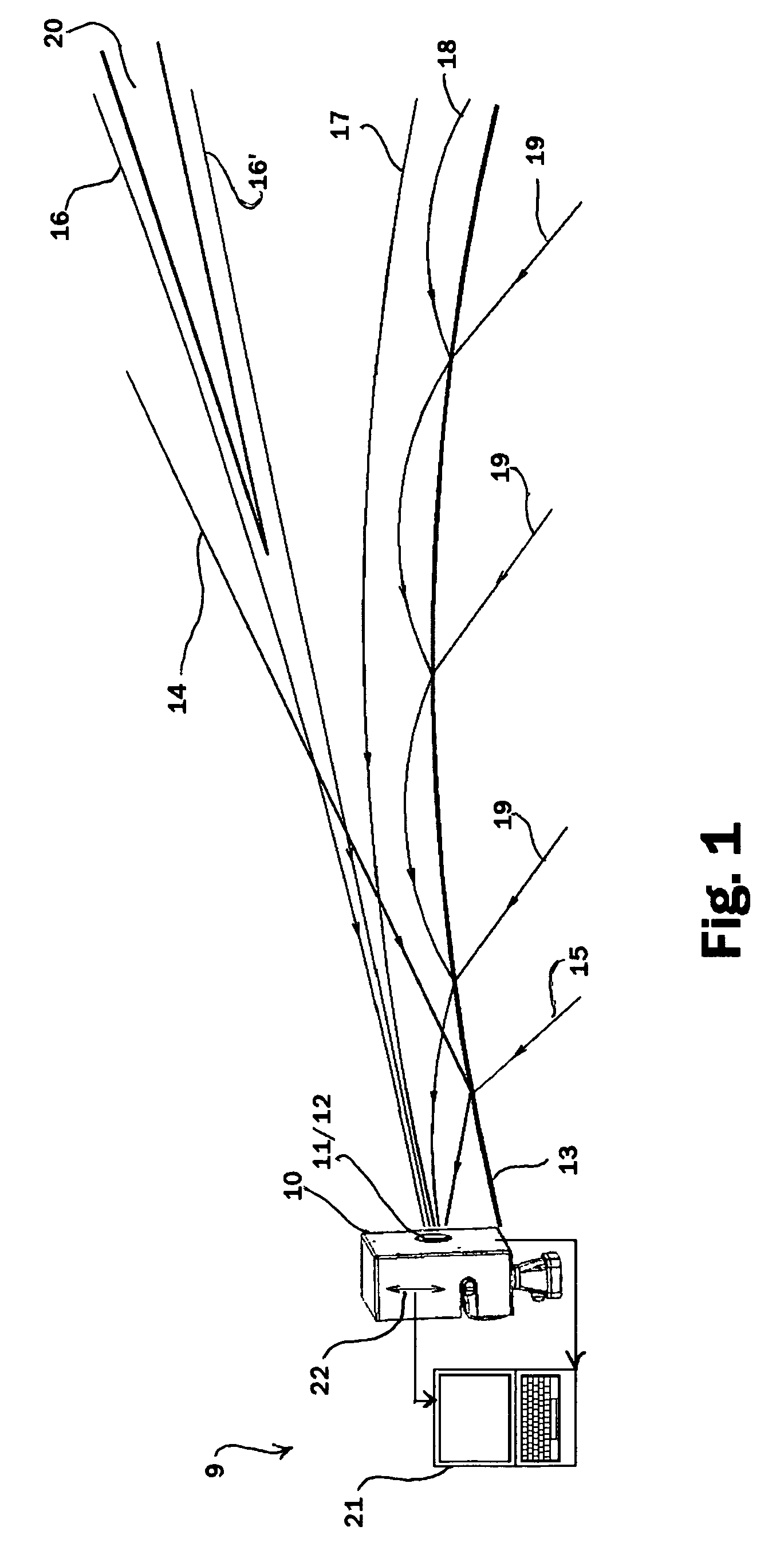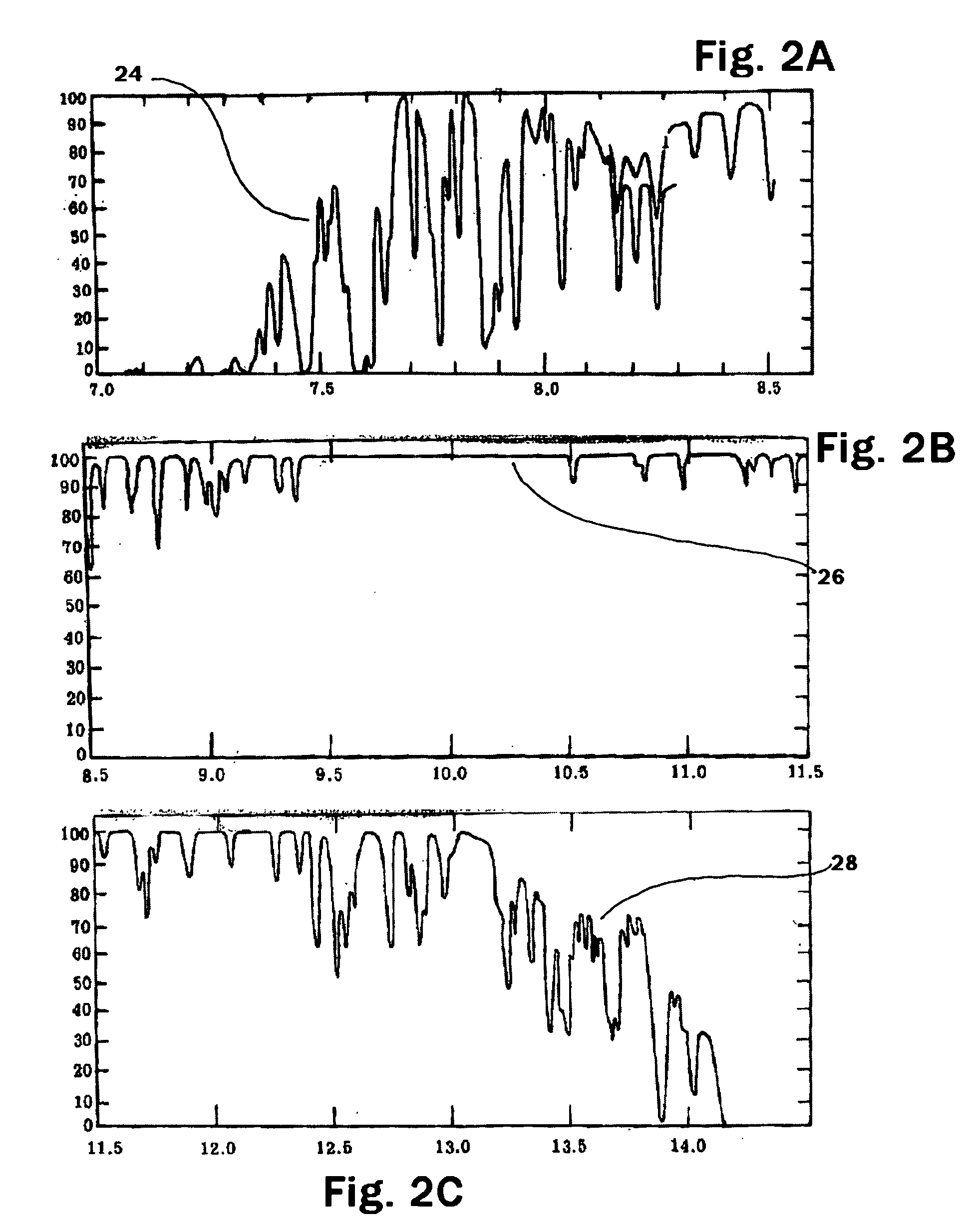Characterizing tropospheric boundary layer thermodynamic and refractivity profiles utilizing multiband infrared observations
a thermodynamic and refractive profile technology, applied in the field of passive characterization of atmospheric characteristics, can solve the problems of loss of the ability to make visual, radio, and/or radar contact, difficult deployment of systems using infrared (ir), visible and ultraviolet, radio/radar waveband, etc., and achieves easy operation, rapid steering, and low cost of deployment and operation.
- Summary
- Abstract
- Description
- Claims
- Application Information
AI Technical Summary
Benefits of technology
Problems solved by technology
Method used
Image
Examples
Embodiment Construction
[0041]FIG. 1 in part illustrates effects of various refractive gradients upon electromagnetic propagation over water. Observed in infrared spatial observations (in this case infrared images but which could alternatively be vertical gradients) of the vicinity of the horizon under such conditions are horizontal layers (or quasihorizontal layers in the presence of horizontal gradients) of optical paths beginning upward from below the optical horizon and progressing upward (with similar effects upon propagation paths in the other optical and radio / RADAR bands). The electromagnetic flux from these layers may originate from over long distances over the ocean, may originate from the ocean, may make multiple reflections off the ocean surface and the under-side of the ducting layer, or may originate from above the horizon in the cold sky. They therefore manifest as layers of differing temperatures in infrared images.
[0042]FIG. 1 (illustrating a trapping of electromagnetic radiation in the du...
PUM
| Property | Measurement | Unit |
|---|---|---|
| heights | aaaaa | aaaaa |
| temperature | aaaaa | aaaaa |
| pressure | aaaaa | aaaaa |
Abstract
Description
Claims
Application Information
 Login to View More
Login to View More - R&D
- Intellectual Property
- Life Sciences
- Materials
- Tech Scout
- Unparalleled Data Quality
- Higher Quality Content
- 60% Fewer Hallucinations
Browse by: Latest US Patents, China's latest patents, Technical Efficacy Thesaurus, Application Domain, Technology Topic, Popular Technical Reports.
© 2025 PatSnap. All rights reserved.Legal|Privacy policy|Modern Slavery Act Transparency Statement|Sitemap|About US| Contact US: help@patsnap.com



